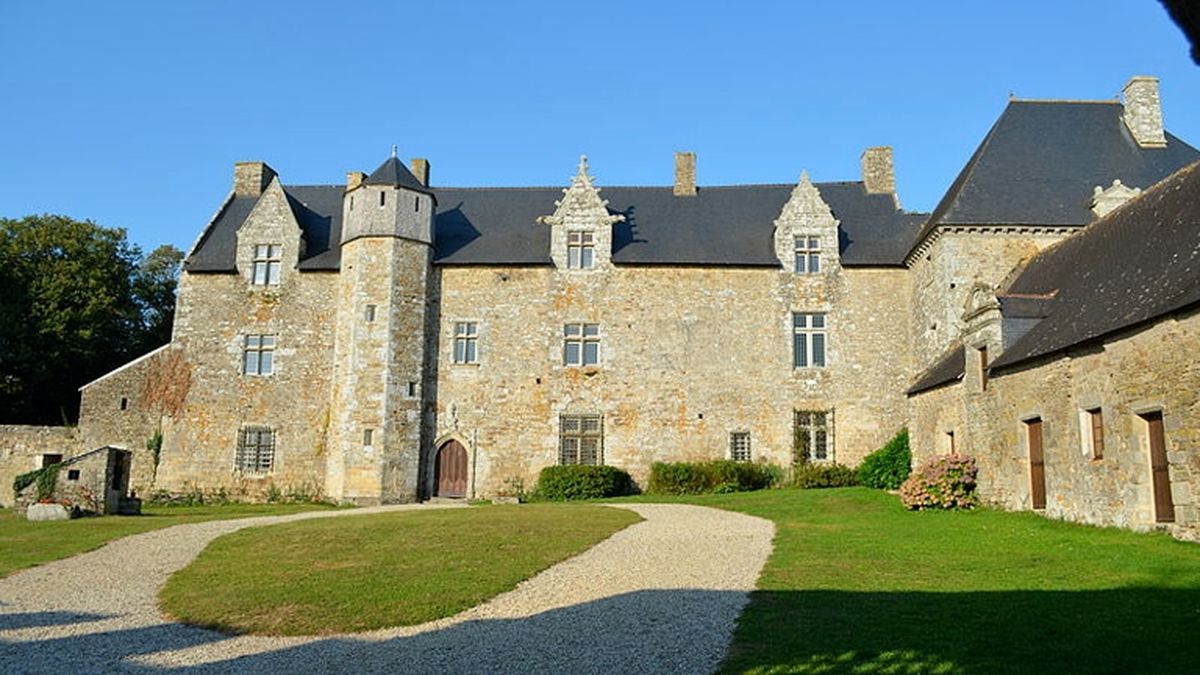 The courtyard | ©Selbymay / CC-BY-SA
The courtyard | ©Selbymay / CC-BY-SAJosso’s castle
This small castle dates back to the 14th century (1330 or 1340), when Sylvestre Josso, squire of duke of Brittany Jean III began the construction.
A real stronghold surrounds by granite walls: the Plessis was extended and altered in the 15th and 16th c. by the Josso family, who added a staircase tower and small windows.
Rosmadec saw the Virgin!
In 1500, the castle fell to the Rosmadec by marriage. They turned old into new: Marc de Rosmadec raised a detached house perpendicular to the former main building.
In 1786, the last of the Rosmadec died out and the Plessis fell to the Le Mintier de Léhélec.
The bedroom with the wooden panellings was bishop of Vannes Sébastien de Rosmadec's one (1624-1646), when he came to see his family.
He was the one who inquired on the Virgin Mary’s apparitions in Auray and founded the famous Breton pilgrimage of Ste-Anne-d’Auray… do you remember?
We already met him in the castle of Kerguéhennec.
An underground for resistant priests
During the French Revolution, the resistant priest (prêtres réfractaires in French) were legion, especially in Western France, since a decree completely messed up the organisation of the French Church.
This decree was called the constitution civile du clergé, “clergy’s civil Constitution”: the famous separation of religion and State…
Some priest didn’t want to yield to this new measures, so they became outlaws, vulgar hunted down crooks, slaughtered, forced to say their Mass in secret…
The Le Mintier de Léhélec family hosted some of those priests in the castle.
One day, one of them was saying the Mass, but an unexpected visit scared him: he gave up everything and ran away in a special underground. Which underground? We don’t know, because the owners never found it!
